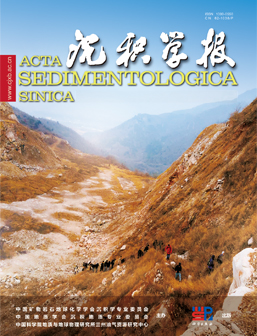Types of stromatolites and their paleoenvironmental significance of the Neoproterozoic Wangshan Formation at the northern margin of the XuHuai Basin
doi: 10.14027/j.issn.1000-0550.2025.041
- Received Date: 2025-04-07
- Available Online: 2025-11-24
-
Key words:
- Stromatolites /
- Paleoenvironment /
- Wangshan Formation /
- Neoproterozoic /
- Xuhuai Basin
Abstract: [Objective]The characteristics and types of stromatolites are of great significance for revealing the co-evolution of early life and the geological environment on Earth. The Neoproterozoic Wangshan Formation in the Xuhuai area on the southeastern margin of the North China Craton is widely developed with stromatolites, but the macroscopic and microscopic characteristics of the stromatolites and their response mechanisms to the sedimentary environment and paleoclimate significance remain unclear. [Methods]This study takes the stromatolites of the Wangshan Formation as the research object. Through the analysis of the macroscopic and microscopic characteristics of the stromatolites, combined with the analysis of major elements and carbon-oxygen isotopes, the sedimentary facies zones of the stromatolites in the Wangshan Formation are systematically divided, the main controlling factors of stromatolite growth are discussed, and the co-evolution relationship between stromatolites and the paleoenvironment is reconstructed.[Conclusions]The research results show that the Wangshan Formation mainly contains three types of stromatolites: columnar, wavy, and laminated. Columnar and wavy stromatolites are concentrated in high-energy intertidal zones, while laminated stromatolites are stably distributed in low-energy supratidal zones. During the sedimentary period of the Wangshan Formation, the climate changed frequently, and the sea level experienced three complete transgression-regression cycles, showing a general trend of gradual shallowing. The prosperous period of stromatolites is coupled with the shallow water environment under the background of an arid climate. By comparing the stromatolites in this study area with modern stromatolites, it is found that there may be multiple microorganisms on the microbial mats of the stromatolites in the Wangshan Formation, and their metabolic activities and interactions to some extent restrict the microscopic morphology of stromatolites. The intensity of terrigenous clastic input and storm events to some extent regulate the microbial ecological succession; accommodation space, light intensity and hydrodynamic environmental factors affect the macroscopic morphology of stromatolites. This study can provide new evidence for the co-evolution of life and environment in the Neoproterozoic.
| Citation: | Types of stromatolites and their paleoenvironmental significance of the Neoproterozoic Wangshan Formation at the northern margin of the XuHuai Basin[J]. Acta Sedimentologica Sinica. doi: 10.14027/j.issn.1000-0550.2025.041 |






 DownLoad:
DownLoad: